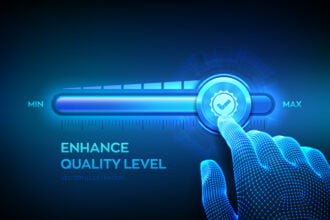Last week I saw a post comparing Best Buy and Circuit City – one thriving and one going into bankruptcy – and it made me think about the role of decision management in Best Buy’s success. I have head Best Buy present various times an a number of elements of their successful customer-centricity strategy are decision-centric.
The first thin…
Copyright © 2008 James Taylor. Visit the original article at On Best Buy’s success and being decision-centric.
Last week I saw a post comparing Best Buy and Circuit City – one thriving and one going into bankruptcy – and it made me think about the role of decision management in Best Buy’s success. I have head Best Buy present various times an a number of elements of their successful customer-centricity strategy are decision-centric.
The first thing to note is that, overall, Best Buy focuses not on customer acquisition but on growing existing customers – especially since the best customers drive 4x the revenue of an average one. This focus on customer development and retention is common in decision-centric companies as existing customers generate lots of behavioral data that can be used to develop analytics and so improve decision-making. It also generates a great ROI.
One thing Best Buy has done is develop some very sophisticated personas. These are not based on judgmental criteria but the result of sophisticated analytics (I have discussed using analytics to improve personas before) and these models are used to asses the different demographic segments visiting each store so that they can be targeted with different store facilities and styles. Store layout and review for Best Buy is now very customer-centric rather than focused on store operations. This same insight into customer segmentation is used to change outbound marketing to a balance of mass-marketing, mass-personalized and truly personalized materials. This segmentation then is used not just as a decision support tool – to change the layout of stores – but also in an automated, decision management environment. This broad use of segmentation is another characteristics of decision-centric companies.
Best Buy uses analytics for more than just segmentation, however, additionally developing models to find products relevant to customers and to predict when they will be interesting. These purchase patterns over time are then used to drive direct marketing campaigns, increasingly across different channels. Some of these purchase patterns are long so Best Buy also uses the analytics to keep customers engaged in what can be a long sales cycle. For instance Home Theater is about 12 month cycle – 5 months dreaming, 5 months researching, 2 month active buying and Best Buy targets the 12 touches or so this involves. They also use these analytics to personalize the offers made through the loyalty program with targeted messaging, special offers in your areas of interest and so on. In the future they want to connect all this insight and apply more of their loyalty vision. This very fine-grained and targeted insight was described in a McKinsey concept of “cell-level insight” (see Capitalizing on customer insights – subscription required). The paper uses Best Buy as an example. One of the first things Best Buy did was hook up its revenue to individual customers, a key step to providing “cell-level” data. Once they had this “cell-level” insights Best Buy uses decision management to turn these insights into actions – you must embed these insights into “key decisions” to get value. Best Buy, for instance, applies these insight to their direct marketing, offers and increasingly to the systems their staff use when interacting with a customer. Decision-centric companies are focused on using fine-grained analytics across channels and this focus on time-based analytics is where the more sophisticated are headed.
I believe that Best Buy is not successful only because it is customer-centric but also because it is decision-centric.






